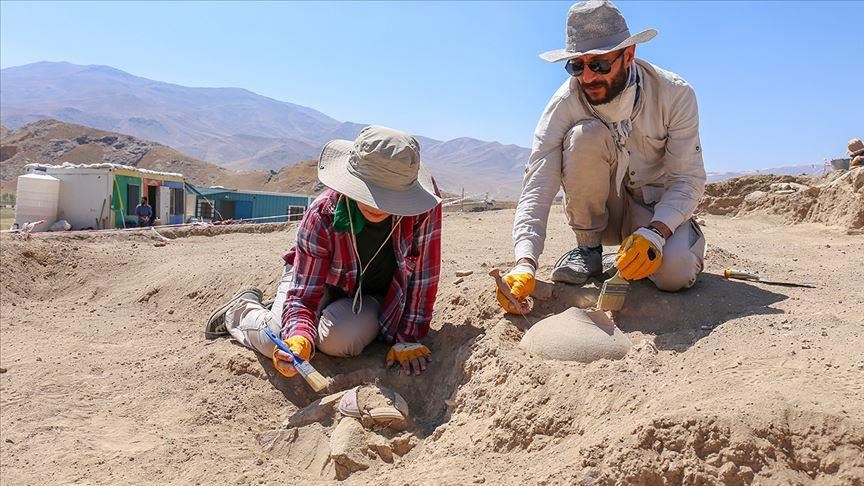The burial ground of Urartian aristocrats was discovered in the Van province

Burial site of Urartian nobles revealed in East Turkey. The burial ground with a 538 square feet area, is believed to be the resting place of Urartian aristocrats. Excavation work at Urartian castle located in Van province, continue to offer new information and surprise experts
Archaeological excavations have unearthed a burial ground, belonging to 9th Century B.C. Urartian royals in East Turkey’s Van province.
The burial ground was discovered in the 2,750-year-old necropolis area, which was unearthed two years ago, during the excavation at Cavustepe Castle, a fortified site in the Gurpinar district.
A team of 22 excavators -- including anthropologists, archeologists, art historians and restoration work officials -- discovered the burial ground. Experts believe that the discovery will help, to study ancient civilizations, in a more scientific way.

Led by Rafet Cavusoglu, a professor of archaeology at the Van’s Yuzuncu Yil University, the team found 2,777-year-old male and female skeletons, along with a silver necklace, 39 earrings, an amulet, a lion brooch, as well as a belt depicting mythological characters.
The burial ground with a 50 square meter (538 square feet) area, is believed to be the resting place of Urartian aristocrats.
Due to its location, Van, known as the pearl of Anatolia, has been home for millennia to many civilizations. The Urartians who are believed to have come from Central Asia, ruled the region for 247 years in the 9th Century B.C.
Experts believe that the latest finding, at the Urartian castle, which was built by King Sarduri II in 750 B.C., are expected to offer new information on the burial customs and the ruling class of the ancient civilization, which developed in the Bronze and Iron Age in eastern Turkey, and northwestern Iran.
The kingdom mysteriously disappeared in the 6th century B.C. but was rediscovered as a distinct ancient culture by excavations, carried out in the 19th century.
Talking to Anadolu Agency, Cavusoglu said that they have discovered two types of burial traditions in the necropolis. He expected the findings to contribute to the history, with new information.
“The ruling class living at the castle had been buried here. We see different styles of burials and the advent of polytheistic religion,” Cavusoglu said.
Cavusoglu said they have also found an area covered with stones, bursting with urn vaults, measuring 10 by 5 meters (393 by 196 inches). “Some of the stones are placed in order, others are jumbled,” he added. He said the excavators were still trying to find out use of the area.
“This is a very exciting development for us,” he added.
“It is a very interesting area, different from other sites that we have excavated in the necropolis so far,” he said. He expected more different things to come out during the process of excavations. He said the Urartian civilization and their way of living and behavior have always surprised experts and excavators.
AA
